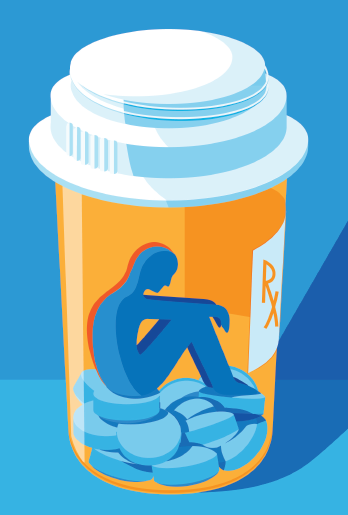
ah_designs / shutterstock.com
A 67-year-old man with a recent onset of diffuse muscular pain and stiffness and an erythrocyte sedimentation rate of 55 is referred to you by his family practitioner. He has a history of non-insulin-dependent diabetes mellitus, but no history of headaches or swollen joints. He has chronic back pain, has had two surgeries and was told that additional surgery would not be helpful. He takes 7.5 mg hydrocodone three times daily prescribed by his family physician for the back pain and is reasonably comfortable.
On examination, you find tenderness of the proximal muscles, no tenderness of the temporal arteries and no objective synovitis. He tests negative for rheumatoid factor, anti-CCP antibodies and antinuclear antibodies.
You diagnose polymyalgia rheumatica (PMR), which is confirmed by a dramatic and complete response to 20 mg daily of prednisone. His back pain does not improve. A year later, he requires 5–7.5 mg of prednisone to control the PMR symptoms and keep the sedimentation rate normal. The primary physician maintains good control of his diabetes, which is affected by the steroids.
He comes to see you for a routine visit and tells you he has a new primary care provider. According to the patient, his provider advised him that she is unable to prescribe any more narcotic analgesics, and they should, instead, be prescribed by his rheumatologist—you.
Discussion
With the present concerns about opioid abuse and overdose deaths, many government agencies and medical organizations have taken steps to limit the use of opioids, even in situations in which they were thought to be appropriate and almost mandatory a few years ago. In the case of chronic use of narcotics for non-cancer pain, restrictions include limitations on the quantity of drugs prescribed and refills, and hand-written prescriptions and frequent face-to-face contacts are needed.1,2 In Illinois, it is now mandatory that I check with the state’s drug registry before any first prescription. As of May 2016, 16 other states had such a requirement. Illinois does not yet tell me what I must do with the information I obtain from the registry.
Several organizations have published guidelines for chronic opioid use.1,2 These guidelines allow for the use of chronic opioids in selected cases, but generally recommend a contract with the patient. Periodic urine drug tests are recommended for all patients or for those with risk factors for abuse.1,2 It is generally accepted that abrupt discontinuation of chronic opioids is inappropriate and even dangerous. Various tapering regimens have been proposed, with only moderate success reported.3 Many of these employ such techniques as cognitive behavioral therapy and multidisciplinary management, resources that are not readily available to the practitioner and may not be acceptable to the patient because of financial and time considerations.


